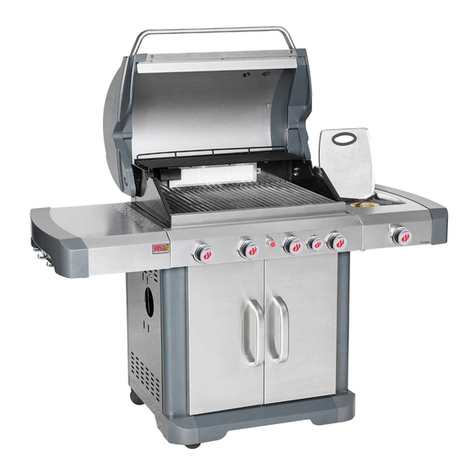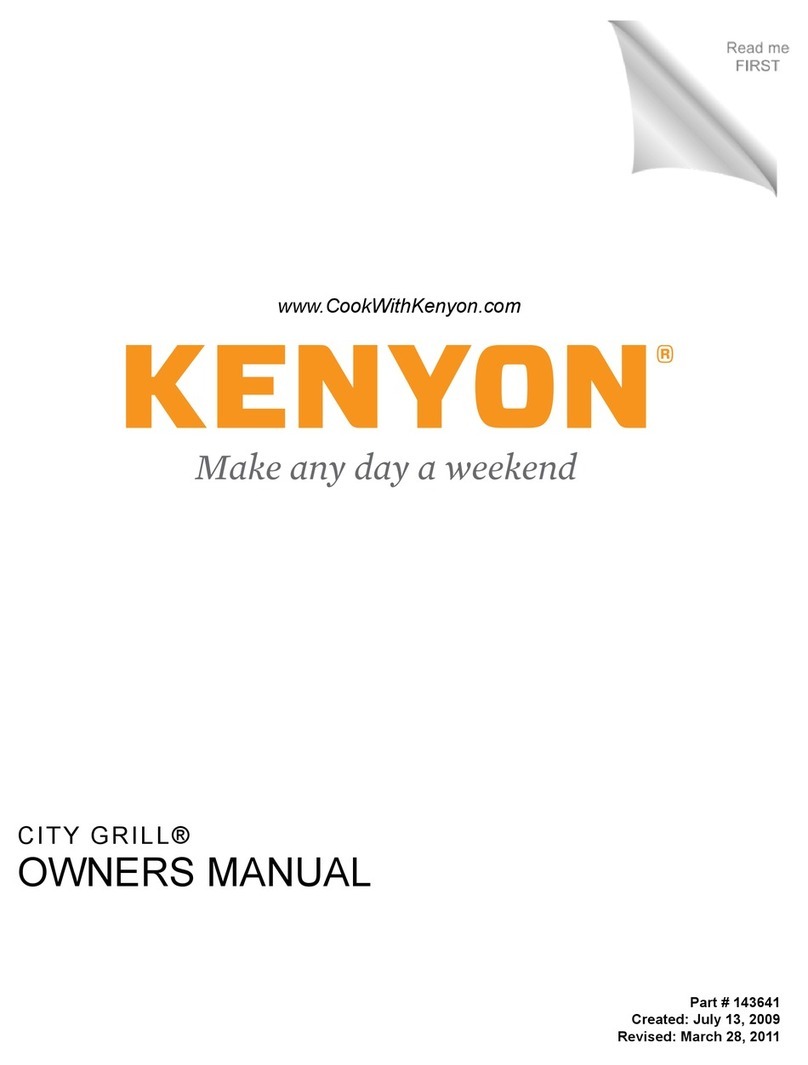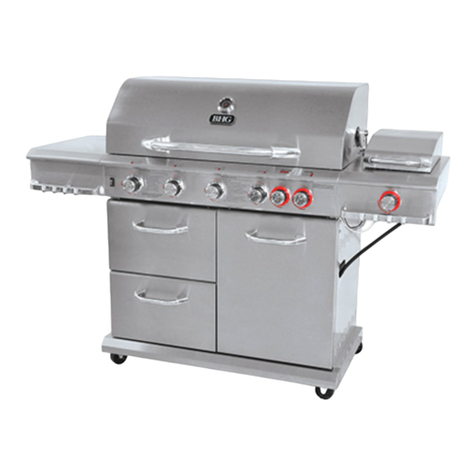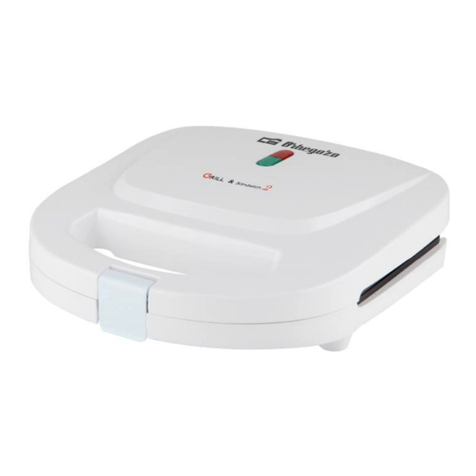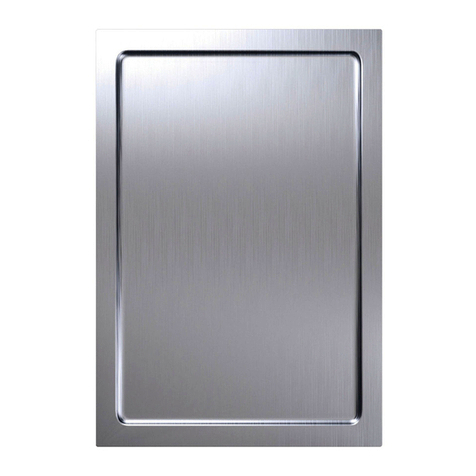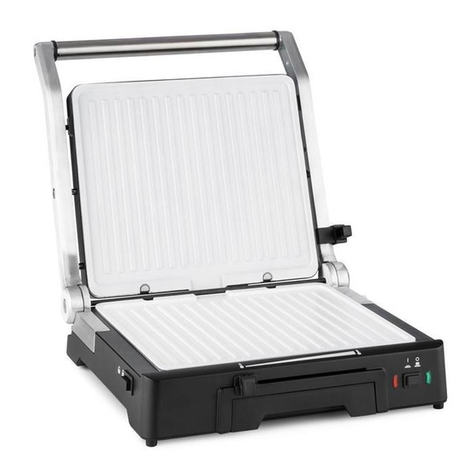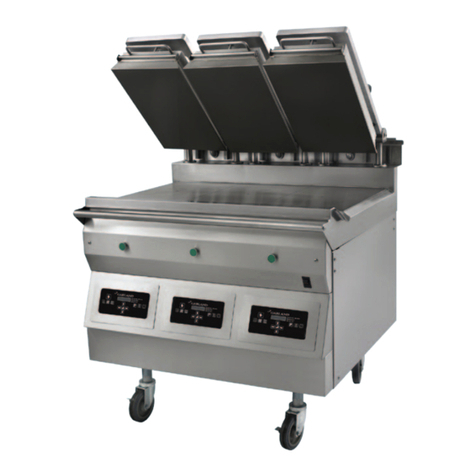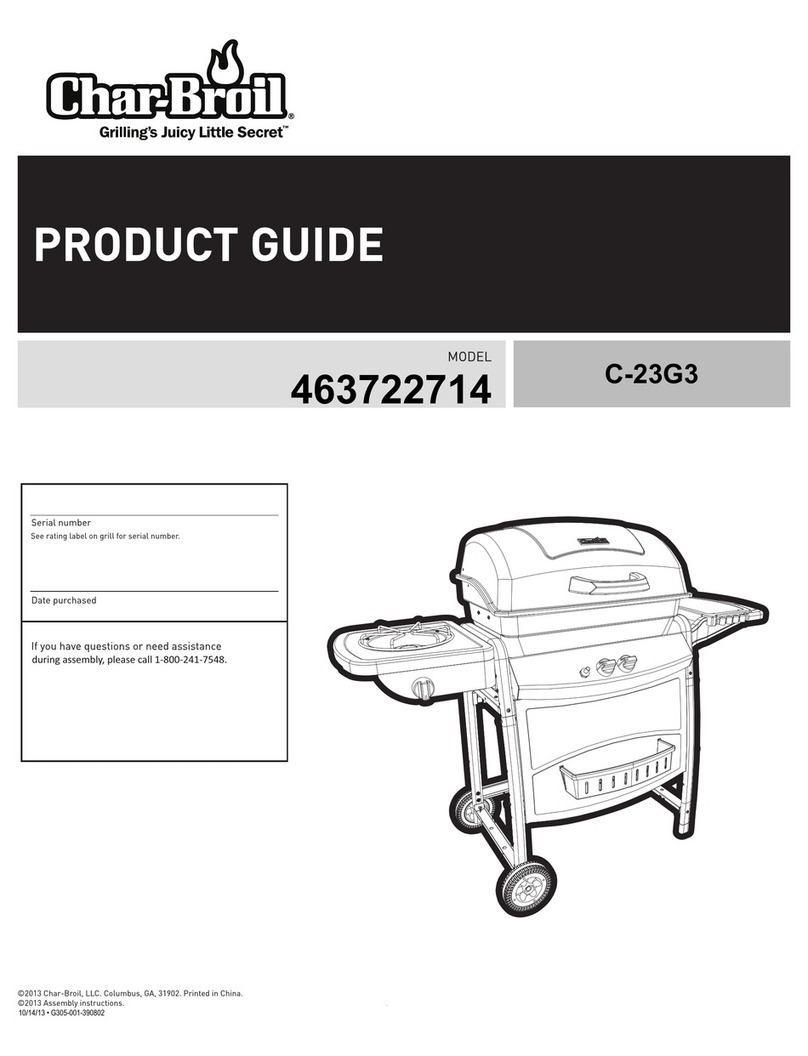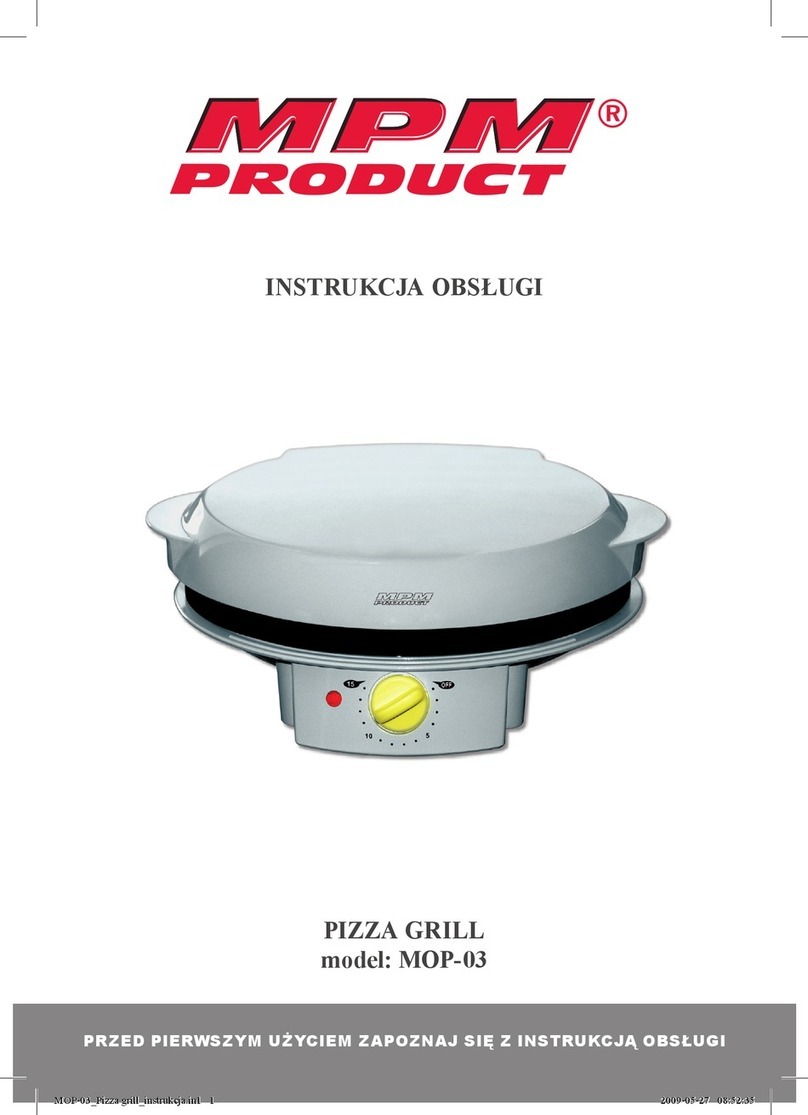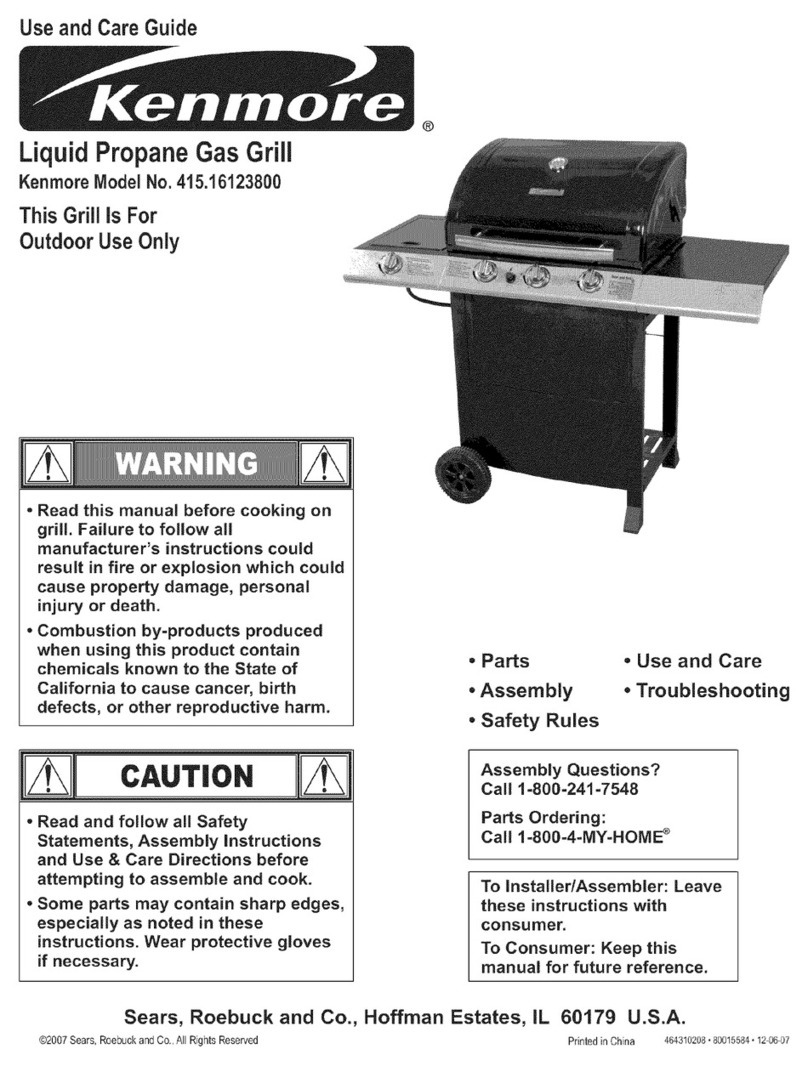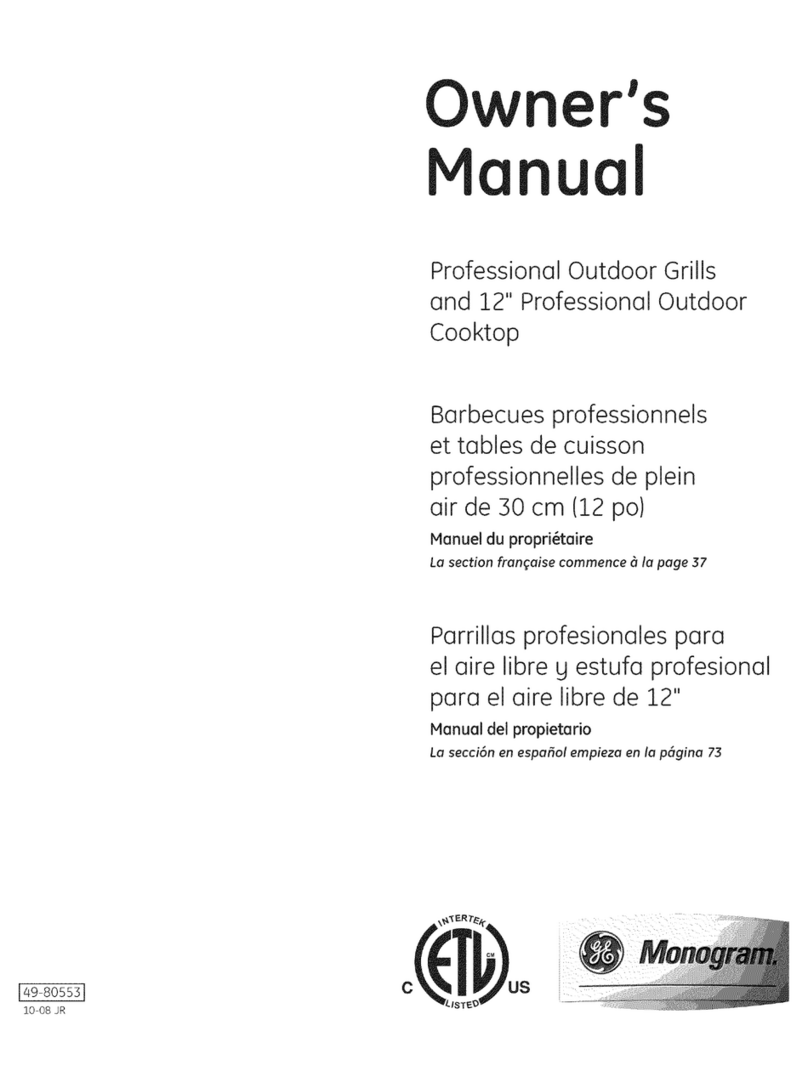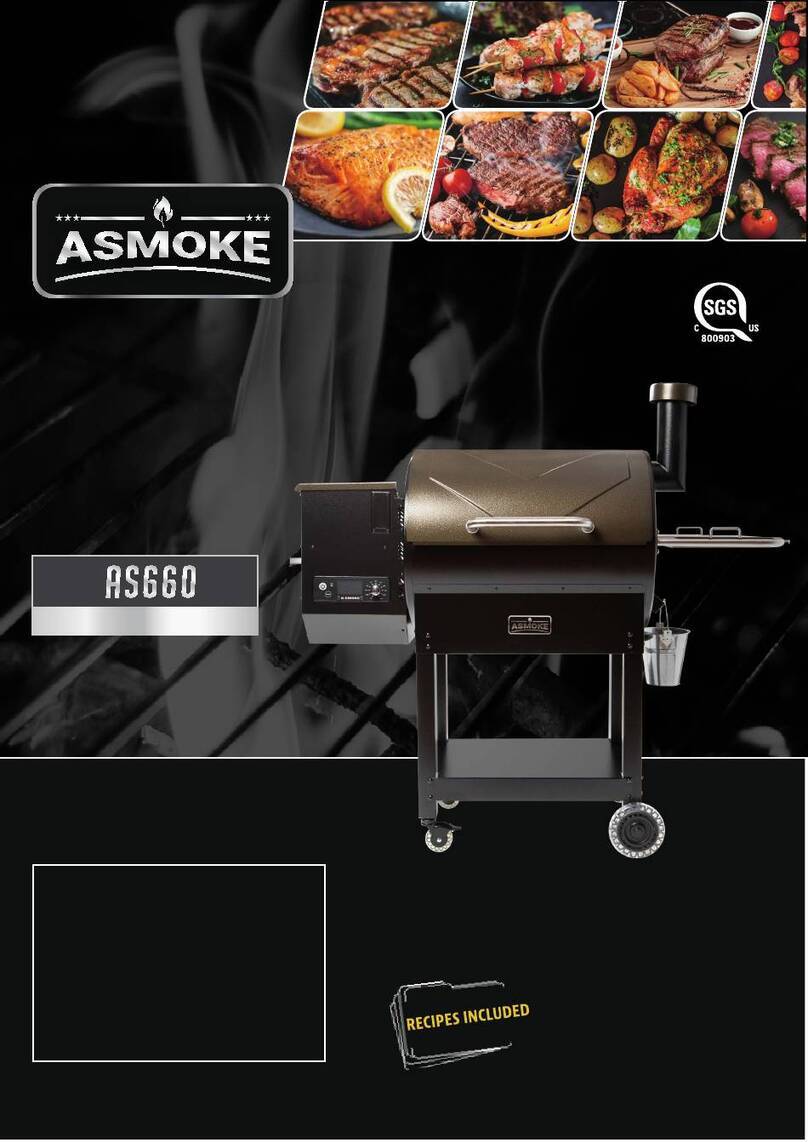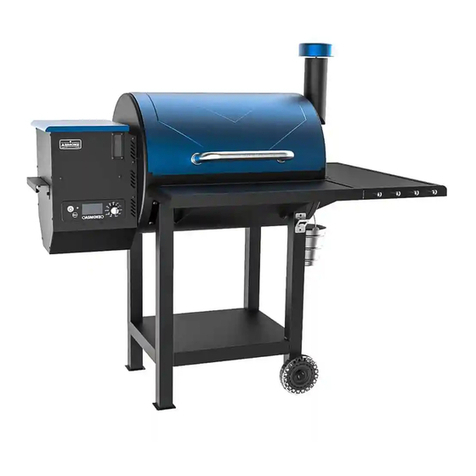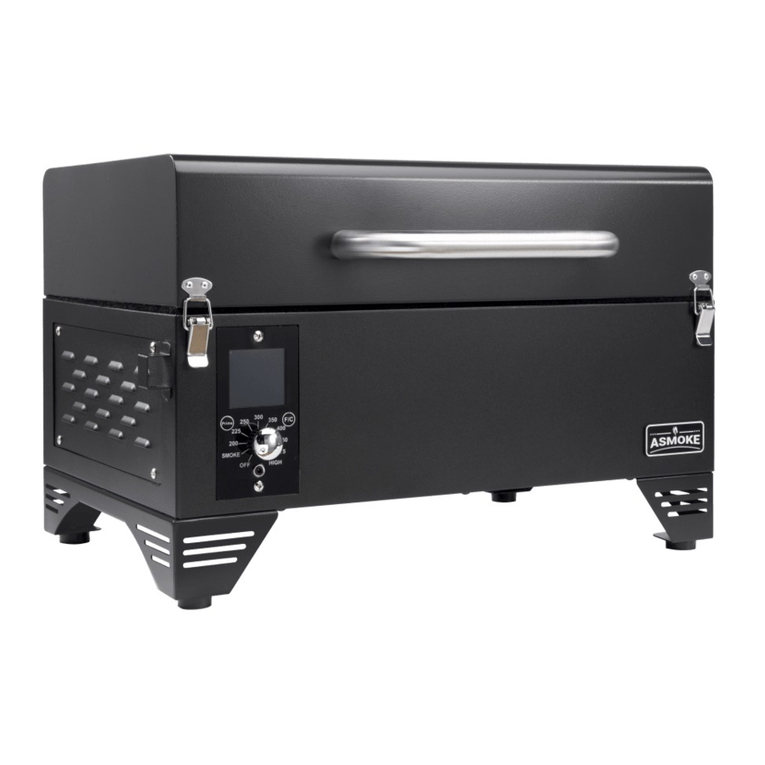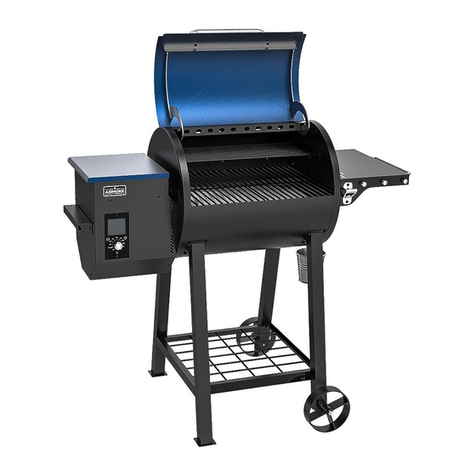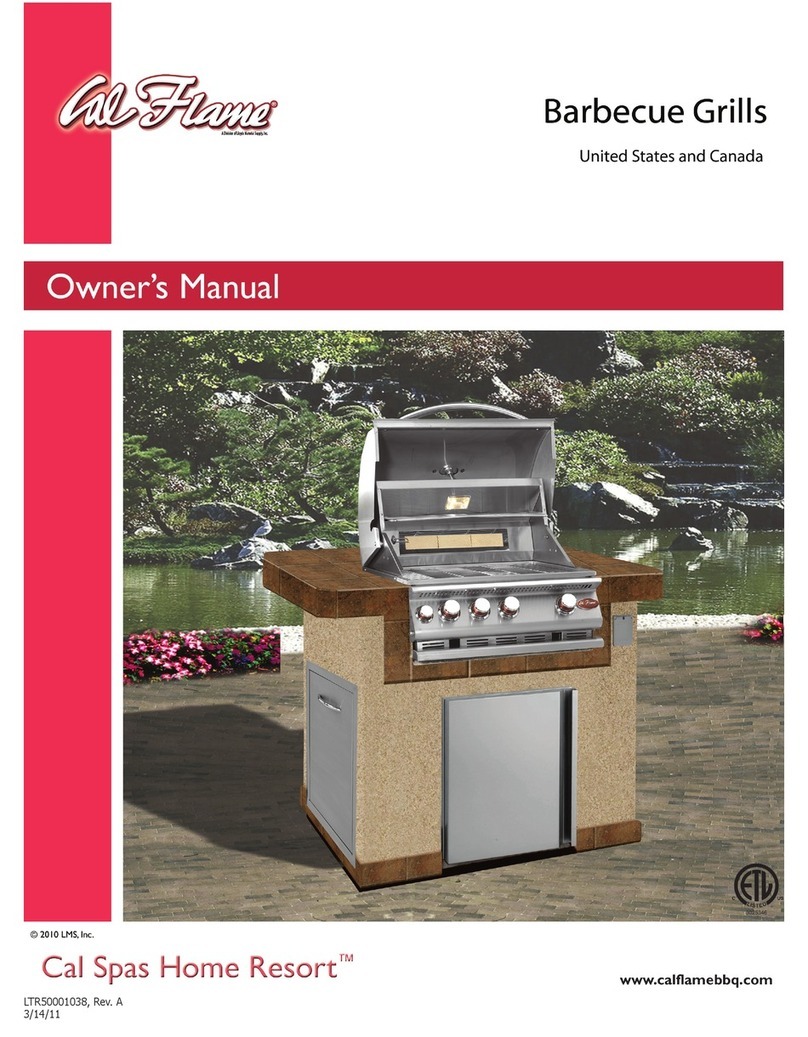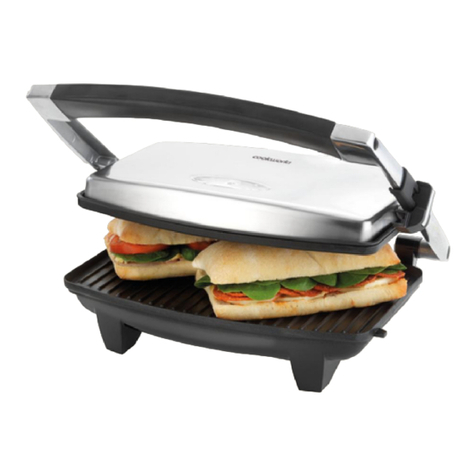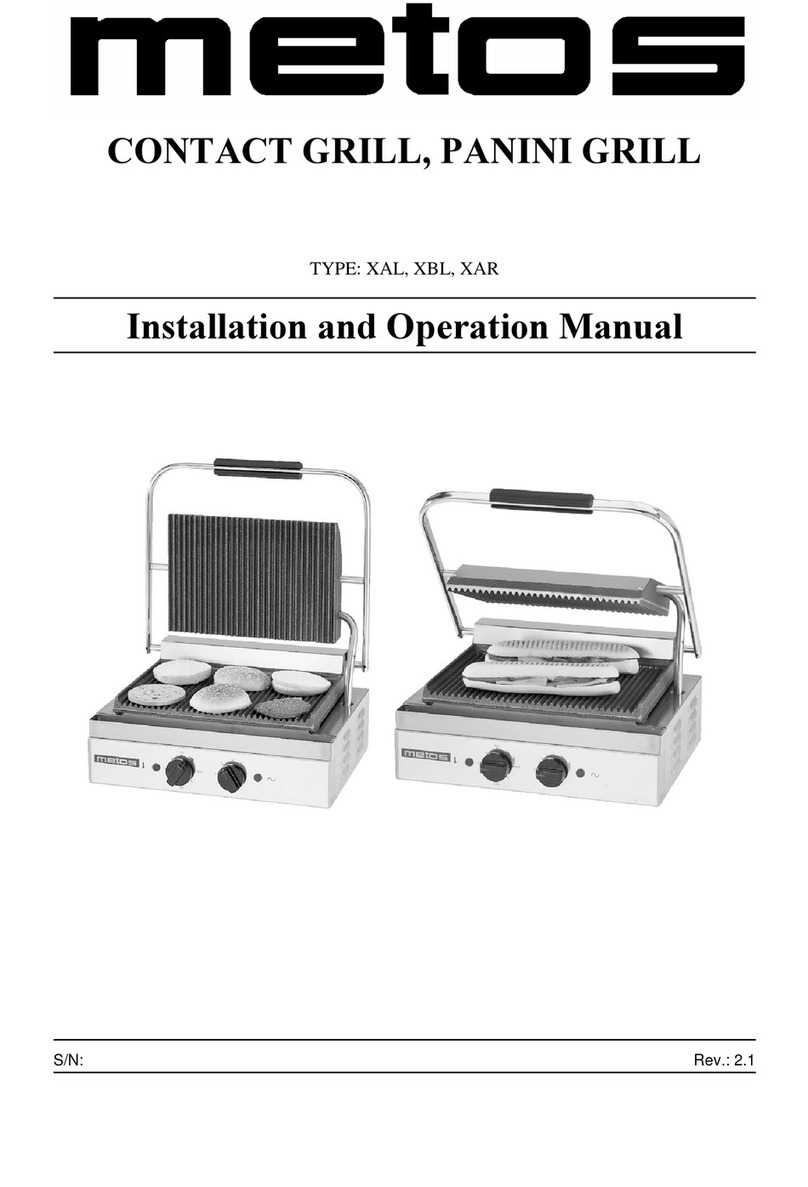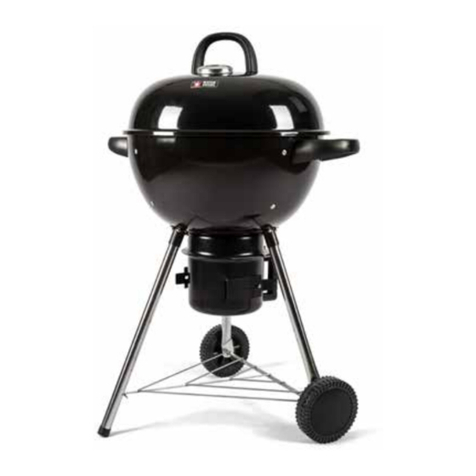
Do not use spirit, petrol, gasoline, lighter-fluid or kerosene for lighting or refreshing a fire in your grill.
Keep all such liquids well away from the appliance when in use.
DISPOSAL OF ASHES
Ashes should be placed in a metal container with a tight-fitting lid. The closed container of ashes should be placed on a non-
combustible floor or on the ground, well away from all combustible materials, pending final disposal. When ashes are disposed by
burial in soil, or otherwise locally dispersed, they should be retained in a closed container until all cinders have thoroughly cooled.
WOOD PELLET FUEL
This pellet cooking appliance is designed and approved for pelletized, all natural, no blend pure wood. Any other type of fuel
burned in this appliance will void the warranty and safety listing. You must only use all natural wood pellets, designed for
burning in pellet
barbecue grills. Do not use fuel withadditives.
At the time of printing, there is no industry standard for barbecue wood pellets, although most pellet mills use the same standards
tomakewoodpelletsfordomesticuse. Furtherinformation,canbefoundatwww.pelletheat.orgorthePelletFuelInstitute.
Contactyourlocaldealeronthequalityofpelletsinyourarea,andforinformationonbrandquality.Asthereisnocontrolover
thequalityofpelletsused,moistureaffectedpellets,weassumenoresponsibilitytodamagecausedbypoorqualityoffuel.
CREOSOTE
Creosote, or soot, is a tar-like substance. When burning, it produces black smoke with a residue which is also black in color. Soot
or creosote is formed when the appliance is operated incorrectly, such as: blockage of the combustion fan, failure to clean and
maintain the burn area, or poor air-to-fuel combustion.
It is dangerous to operate this appliance should the flame become dark, sooty, or if the burn pot is overfilled with pellets. When
ignited, this creosote makes an extremely hot and uncontrolled fire, similar to a grease fire. Should this happen, turn the unit OFF,
let it cool completely,then inspect for maintenance and cleaning. It commonly accumulates along exhaustareas.
Ifcreosotehasformedwithintheunit;allowtheunittowarmupatalowtemperature,turnofftheappliance,thenwipeaway
any formation with a hand towel. Similar to tar,it is much easier to clean when warm, as it becomes liquid.
CARBON MONOXIDE (“the silent killer”)
Carbon monoxide is a colorless, odorless, tasteless gas produced by burning gas, wood, propane, charcoal or other fuel. Carbon
monoxide reduces the blood’s ability to carry oxygen. Low blood oxygenlevels can result in headaches, dizziness, weakness,
nausea, vomiting, sleepiness, confusion, loss of consciousness or death. Follow these guidelines to prevent this colorless, odorless
gas from poisoning you, your family, orothers:
•
See a doctor if you or others develop cold or flu-like symptoms while cooking or in the vicinity of the appliance. Carbon
monoxide poisoning, which can easily be mistaken for a cold or flu, is often detected too late.
•
Alcohol consumption and drug use increase the effects of carbon monoxide poisoning.
Carbon monoxide is especially toxic to mother and child during pregnancy, infants, the elderly, smokers, and people with blood
or circulatory system problems, such as anemia, or heart disease.
SAFETY LISTING
CAS/UL 60335-1 & IEC 60335-2-102
2
6.
Parts of the barbecue may be very hot, and serious injury may occur.Keep young children and pets away while in use.
7.
Donot enlargeigniterholesorburnpots.Failuretofollowthiswarningcouldleadtoafirehazardandbodilyharmandwill
void your warranty.
8.
Product may have sharp edges or points. Contact may result in injury. Handle with care.
9.
If the supply cord is damaged, it must be replaced by manufacturer, its service agent or similarly qualified
persons in order to avoid a hazard.
10.
Children should be supervised to ensure that they do not play with the appliance.
